Java-多线程
多线程
概述
- CPU、内存和 IO 之间存在着巨大性能差异
- 多核CPU的发展帮助了多线程的生成
线程的本质 => 一个可以执行代码的工人
- 优点:多个执行流,并发执行
缺点:
- 慢 => 切换上下文(1μs == 10^3 ns)(CPU数量远远小于线程数量) => 减少上下文切换 => 协程(用户态线程):在一个线程内部通过调度手段执行不同的工作
- 占用资源 => 每个线程有独立的方法栈
- Thread 类的每一个实例代表 JVM 中的线程(start() 之后,且未结束),其他都不是线程
- 不同的执行流的同步执行是一切线程问题的根源
- 线程的开始方法只能是 Main 或 Thread.run 方法
Thread 底层模型
- JVM 中的线程(Thread 类的每一个实例)在 Linux 中称为轻量级进程,和进程无本质区别,JVM 中的进程共享内存空间
- JVM 中的线程(Thread 类的每一个实例)在 Windows 中使用系统进程
- 优点:简单,直接依赖操作系统的调度器
缺点:
- 占用资源多
- 上下文切换慢
- 不灵活,无法实现灵活的优先级
Thread 生命周期

Thread Life Cycle
- BLOCKED => A thread in the blocked state is waiting for a monitor lock to enter a synchronized block/method or reenter a synchronized block/method after calling Object.wait.
WAITING => A thread is in the waiting state due to calling one of the following methods:
- Object.wait with no timeout
- Thread.join with no timeout
- LockSupport.park
ThreadLocal
- 同一个对象根据调用线程的不同返回不同的值
- 通常用于存储线程私有的值,方便后续流程使用
Runnable & Callable
- Runnable => 代表一个任务,可以被任何一个线程执行。没有返回值并且不能抛出 Checked Exception =>
public abstract void run(); - Callable => 和 Runnable 没有本质的区别,也代表一个任务。但是有返回值并且可以抛出 Checked Exception =>
V call() throws Exception;
Thread 中断
InterruptedException
- Thread.sleep() =>
public static native void sleep(long millis) throws InterruptedException; - BlockingQueue.put() =>
void put(E e) throws InterruptedException; Thread.interrupt() => Interrupts this thread. => 唯一的用处就是取消一个耗时的操作
public class Main {
public static void main(String[] args) throws InterruptedException {Thread newThread = new Thread(() -> {try {Thread.sleep(1000);} catch (InterruptedException e) {System.out.println("I'm interrupted!");throw new RuntimeException(e);}});newThread.start();Thread.sleep(500);newThread.interrupt();}
}
允许线程A对线程B进行有限程度的控制
- 线程可以选择不响应 InterruptedException,但是不推荐
- 除非你非常确定目标线程的中断特性,否则不要中断它
- 任何线程都可以被中断吗 => 中断与否取决于线程自己的决定
- 中断会发生在哪里?=> 线程自己的策略
JVM 的阻塞方法都会正常响应中断 => e.g. Thread.sleep()
public class TaskRunnable implements Runnable {
public void run() {try {Thread.sleep(1000);} catch (InterruptedException e) {// restore interrupted status// 如果没有能力处理中断,那么请重新设置中断标志位,使得其他人能够知道该线程被中断了Thread.currentThread().interrupt();}}
}
JMM
- JMM(Java Memory Model) => Java 内存模型
- 栈帧中的局部变量是线程私有的
- 除此之外其他东西都是共享的

Java Memory Model
- 主内存
- 工作内存 => 存有一个全局的主内存的变量的副本
公有变量会存在私有的副本
public class Main {
public static boolean cancelled = false;public static void main(String[] args) throws InterruptedException {new Thread(() -> {while (true) {if (cancelled) {// 取消自己做的事情break;}try {// 做一些定时器相关的事情Thread.sleep(500);} catch (InterruptedException e) {Thread.currentThread().interrupt();}}}).start();Thread.sleep(1000);// 注意:修改的是主线程的副本,其他的线程有可能会没有感知 cancelled 已经更改cancelled = true;}
}
线程之间没有感知到对公有变量的修改 => volatile => 保证可见性,并非原子性
volatile 可见性 => 使用 Java 内存模型机制保持同步,并不是原子操作,是非常弱地同步机制
- 写入 volatile 变量会直接写入主内存
- 从 volatile 变量读取会直接读取主内存
volatile 禁止指令重排 => 编译器和处理器都可能对指令进行重排,导致问题
public class Main {public static boolean initializeFinished = false;// public volatile static boolean initializeFinished = false;public static void main(String[] args) {init();// 如果 initializeFinished 是 volatile 的,那么在该指令前后会形成一个内存屏障// 内存屏障可以禁止指令重排// 在读之前产生内存屏障initializeFinished = true;// 在写之后产生内存屏障// 在线程中两个指令没有任何关系,可能进行指令重排// 最终地可能的执行顺序// initializeFinished = true;// init();
new Thread(() -> {while (true) {if (initializeFinished) {// 如果发生了指令重排,那么可能还没有初始化,就执行了该方法doSomething();break;}try {Thread.sleep(500);} catch (InterruptedException e) {Thread.currentThread().interrupt();}}}).start();}private static void doSomething() {// 在初始化工作之后做一些有意义的事情}private static void init() {// 进行一些初始化工作}}
- 有同步的时候无需 volatile,如 synchronized/Lock/AtomicInteger
多线程问题
- 线程安全 => 当一个类在多线程环境下被使用时仍能表现出正确的行为 => 竞争条件 + 死锁 => synchronized
- 协同 => 同时、随机执行的线程,线程之间如何协同工作 => wait()/notify()/notifyAll()
- 效率和易用性 => 执行地越快越好 + 用起来越不容易出错越好
线程安全
竞争条件
class Main {public static int globalI = 0;public static void main(String[] args) {for (int i = 0; i < 100; i++) {// 多个线程同时读取 globalI 的值,之后加1,之后写回去// 使用 volatile 也不可以,因为不是原子操作new Thread(() -> globalI++).start();}System.out.println("globalI: " + globalI); // 正确应该是 100}}// 创建单例class SingletonObject {private static SingletonObject SINGLETON_INSTANCE;public static SingletonObject getInstance() {// 创建过程非常昂贵,希望第一次使用的时候才去创建// check-then-act// 多线程模式下可能创建多个实例if (SINGLETON_INSTANCE == null) {SINGLETON_INSTANCE = new SingletonObject();}return SINGLETON_INSTANCE;}private SingletonObject() {// ... expensive operations}}// ConcurrentHashMap 多个操作联级class Main {public static Map<String, Object> values = new ConcurrentHashMap();public static void main(String[] args) {// 多个操作联级,不是原子的// 使用 values.putIfAbsent("key", calculate("")); 代替if (!values.containsKey("key")) {values.put("key", calculate(""));}}private static Object calculate(String s) {return null;}}
原子性
=> 解决方案:
- 不可变对象
- 各种锁 => synchronized/Lock
并发工具包 => java.util.concurrent => 底层通常是 CAS
- int/long => AtomicInteger/AtomicLong
- HashMap => ConcurrentHashMap
- ArrayList => CopyOnWriteArrayList
- TreeMap => ConcurrentSkipListMap
- [] => AtomicLongArray
- Object => AtomicReference
CAS
CAS =>
Compare And Swap
=>
只有在看到内存中的值是预期的值的时候,更新才会成功,否则将不会成功。其和死循环一起使用,只要不成功,就再次更新一次
- Expectation(预期值) + New(新值) + Old(旧值)
- CAS => 若 E == O 则 O 更新为 N,否则失败
ABA 问题
=> 旧值原来是 A,其他线程将旧值更新为 B,之后又更新为 A => TODO:Google Search CAS and ABA
- 原有链表 C -> D -> A,要将尾节点换为 B,原子操作
- CAS => 当且仅当尾节点是 A 的时候将 A 替换为 B
- 原有链表变为 C -> E,D -> A 从原来链表出来了,此时 CAS 还会正常更新
- 上述不仅仅是 A 的值是关键的,整个环境(链表状态)也是关键的
- 解决方案:时间戳。在更新 A 的时候不仅记录 A 的值,还记录当前时间戳,可以知道当 A 替换为 B 之后又变为 A,此时的 A 已经不是最开始的 A 了
乐观锁「自旋锁(spin lock)」=> 我现在追不到你,过一会再来问一下 => while(true) 等待 =>
占用 CPU
=> CAS
- ConcurrentHashMap => 乐观锁 => 基本上都是 CAS 操作
悲观锁 => 我现在追不到你,沮丧地自暴自弃(阻塞)了 => 等待获取锁,获取到锁之后就可以执行了 =>
放弃 CPU,等待被唤醒
=> synchronized
- HashMap 线程不安全 => HashTable 是将 HashMap 的所有方法签名加添加 synchronized,是线程安全的 => 悲观锁
- HashMap 线程不安全 => synchronizedMap 使用 Decorator 模式,将一个 Map 包装成一个 SynchronizedMap,将所有方法添加 synchronized => 悲观锁
public class Main {
private static int counter = 0;private static int pessimisticCounter = 0;private static final AtomicInteger optimismCounter = new AtomicInteger(0);public static void main(String[] args) throws InterruptedException {for (int i = 0; i < 100; i++) {new Thread(() -> {try {Thread.sleep(10);} catch (InterruptedException e) {Thread.currentThread().interrupt();}counter++;optimismIncrement();pessimisticIncrement();}).start();}Thread.sleep(100);System.out.println("线程不安全:" + counter);System.out.println("乐观锁:" + optimismCounter);System.out.println("悲观锁:" + pessimisticCounter);}private static void optimismIncrement() {optimismCounter.getAndIncrement();}private synchronized static void pessimisticIncrement() {pessimisticCounter++;}
}
synchronized
- Java 语言级的支持,1.6之后性能极大提高
字节码层面的实现 => MONITORENTER/MONITOREXIT
public class Main {/*** bytecode* // access flags 0x21* public synchronized foo()V* L0* LINENUMBER 5 L0* GETSTATIC java/lang/System.out : Ljava/io/PrintStream;* LDC ""* INVOKEVIRTUAL java/io/PrintStream.println (Ljava/lang/String;)V* L1* LINENUMBER 6 L1* RETURN* L2* LOCALVARIABLE this Lcom/example/demo/Main; L0 L2 0* MAXSTACK = 2* MAXLOCALS = 1*/public synchronized void foo() {System.out.println("");}/*** bytecode* // access flags 0x1* public bar()V* TRYCATCHBLOCK L0 L1 L2 null* TRYCATCHBLOCK L2 L3 L2 null* L4* LINENUMBER 9 L4* ALOAD 0* DUP* ASTORE 1* MONITORENTER* L0* LINENUMBER 10 L0* GETSTATIC java/lang/System.out : Ljava/io/PrintStream;* LDC ""* INVOKEVIRTUAL java/io/PrintStream.println (Ljava/lang/String;)V* L5* LINENUMBER 11 L5* ALOAD 1* MONITOREXIT* L1* GOTO L6* L2* FRAME FULL [com/example/demo/Main java/lang/Object] [java/lang/Throwable]* ASTORE 2* ALOAD 1* MONITOREXIT* L3* ALOAD 2* ATHROW* L6* LINENUMBER 12 L6* FRAME CHOP 1* RETURN* L7* LOCALVARIABLE this Lcom/example/demo/Main; L4 L7 0* MAXSTACK = 2* MAXLOCALS = 3*/public void bar() {synchronized (this) {System.out.println("");}}}
锁住的是什么?
- synchronized() => 锁住了对象
- public synchronized void foo() {} => 锁住了 this
- public synchronized static void bar() {} => 锁住了当前的 class 对象
底层实现
对象头定义

synchronized 对象头
- synchronized 锁膨胀过程
无锁 -> 偏向锁 -> 轻量级锁 -> 重量级锁
- 无锁 => 当前没有任何线程占用锁
- 偏向锁 => 一直以来都只有一个线程使用锁,下次直接用
- 轻量锁 => 有线程竞争的情况发生,但是不严重,假如某个线程能抢到锁,就不需要获取 monitor => 曾经有过多个线程在抢锁,但是同一个时刻只有一个人在抢锁
- 重量锁 => 同一个时刻有多个线程在同时竞争锁,所以必须要获取 monitor
锁粗化 => 同一个锁要连续频繁加锁解锁,粗化为更大范围的锁 =>
编译器层面优化
public class Main {public static void main(String[] args) {for (int i = 0; i < 10; i++) {// 频繁地加锁解锁,此时编译器可以将其优化成一个更大范围的锁foo();}}public static synchronized void foo() {System.out.println("");}}
锁消除 => 通过逃逸分析,发现一个对象不可能被其他线程所竞争,就不需要上锁 =>
编译器层面优化
public class Main {public void foo() {Object object = new Object();// Synchronization on local variable 'object'synchronized (object) {System.out.println("");}}public Object bar() {Object object = new Object();// Synchronization on local variable 'object'synchronized (object) {System.out.println("");}// 此时其他线程可能拿到局部变量,object 逃逸return object;}}
死锁
public class Main {public static final Object lock1 = new Object();public static final Object lock2 = new Object();public static void main(String[] args) {new Thread(() -> {synchronized (lock2) {try {Thread.sleep(500);synchronized (lock1) {System.out.println("new Thread");}} catch (InterruptedException e) {Thread.currentThread().interrupt();}}}).start();synchronized (lock1) {try {Thread.sleep(500);synchronized (lock2) {System.out.println("main Thread");}} catch (InterruptedException e) {Thread.currentThread().interrupt();}}}}
排查死锁
- jps(找到出问题的 Java 进程 PID) + jstack (查看栈轨迹) + 源代码
- 定时任务 + jstack + 源代码
- 避免死锁 => 所有的资源都以相同的顺序获得锁
线程协同
Java 原生线程协同机制
- wait()
- notify()
notifyAll()
/**
生产者/消费者模型
*/
public class Main {public static void main(String[] args) throws InterruptedException {
Container container = new Container();Consumer consumer = new Consumer(container);Producer producer = new Producer(container);producer.start();consumer.start();producer.join();consumer.join();
}
static class Container {
// 通过修改 Container 从而可以让流程变得复杂,只需更改 Producer 和 Consumer 的循环条件Object value;
}
static class Producer extends Thread {
private final Container container;public Producer(Container container) {this.container = container;}@Overridepublic void run() {for (int i = 0; i < 10; i++) {// 如果 container 中没有值则 produce ,如果有值则等待 consumesynchronized (container) {// 必须放置在 while 循环中,因为有可能唤醒了之后条件还是不允许(虚假唤醒 spurious awake)// https://github.com/frohoff/jdk8u-jdk/blob/da0da73ab82ed714dc5be94acd2f0d00fbdfe2e9/src/share/classes/java/lang/Object.java#L418-L419while (container.value != null) {try {container.wait();} catch (InterruptedException e) {Thread.currentThread().interrupt();}}int random = new Random().nextInt(40);try {Thread.sleep(500);} catch (InterruptedException e) {Thread.currentThread().interrupt();}System.out.println("produce -> " + random);container.value = random;container.notify();}}}
}
static class Consumer extends Thread {
private final Container container;public Consumer(Container container) {this.container = container;}@Overridepublic void run() {for (int i = 0; i < 10; i++) {synchronized (container) {while (container.value == null) {try {container.wait();} catch (InterruptedException e) {Thread.currentThread().interrupt();}}try {Thread.sleep(200);} catch (InterruptedException e) {Thread.currentThread().interrupt();}System.out.println("consumer -> " + container.value);container.value = null;container.notify();}}}
}
}
缺点
- synchronized 在 1.6 之前性能不高
- wait/notify 太原始了,难用
不够灵活
- synchronized 只能修饰一个代码块或方法,如果需要在程序的一个类里面加锁,在另一个类里面解锁,synchronized 做不到。
- 实现优先级。上述生产者消费者模型优先级完全取决于操作系统对线程的调度
JUC
- JUC => java.util.concurrent
相较于 Java 原生线程协同机制
- 提高性能 => 使用了 AtomicInteger 等原子操作,通过 CAS 提高了性能
- 灵活 => 提供了多种场景下更方便的实现
- 易用
AtomicXXX
- AtomicInteger/AtomicBoolean/AtomicLong/AtomicReference
- 全部都是 CAS,提高性能
AtomicXXX 额外用途
public class Main {public static void main(String[] args) {int counter = 0;Object obj = new Object();AtomicInteger atomicInteger = new AtomicInteger(0);AtomicReference<Object> atomicReference = new AtomicReference<>();for (int i = 0; i < 10; i++) {new Thread(() -> {int incrementNumber = new Random().nextInt(10);// Error: Variable used in lambda expression should be final or effectively final// 此处的 counter 和外面的 counter 不是同一个 counter,此处发生了拷贝// https://zhuanlan.zhihu.com/p/82921974counter += incrementNumber;// Error: Variable used in lambda expression should be final or effectively finalobj = new Object();atomicInteger.addAndGet(incrementNumber);atomicReference.set(new Object());}).start();}}}
Lock/Condition
- 同步 => Lock => 最常见的实现 ReentrantLock
- 协同 => Condition =>
lock.newCondition()=> 可以创建多个 Condition => Condition factors out the Object monitor methods(Object#wait(), Object#notify and Object#notifyAll) into distinct objects to give the effect of having multiple wait-sets per object, by combining them with the use of arbitrary Lock implementations. Where a Lock replaces the use of synchronized methods and statements, a Condition replaces the use of the Object monitor methods. Lock vs synchronized
- synchronized 只能有一个条件。Lock 可以有多个条件(e.g. notFull & notEmpty)
- 多个线程读,一个线程写,此时不会有并发问题 => synchronized 不能实现读写分离。ReadLock + WriteLock 读写锁
- synchronized 没有办法测试当前有没有上锁。Lock.tryLock() Acquires the lock only if it is free at the time of invocation.
synchronized 调度完全取决于操作系统。Lock 可以方便地实现更加灵活的优先级 & 公平性
- 公平锁 => 所有的线程几乎平等的概率获取到锁
- 非公平锁 => 可能某个线程一直获取不到锁
ReentrantLock => 可重入锁 => 同一个线程可以重新持有这个锁,而不需要等待这个锁 => synchronized 是可重入的 =>
默认是非公平锁
class X {private final ReentrantLock lock = new ReentrantLock();// ...public void m() {lock.lock(); // block until condition holdslock.lock(); // 可以重新持有,无需等待// 此处一定要写在 try finally 块里面try {// ... method body} finally {lock.unlock();lock.unlock(); // lock 几次就要 unlock 几次}}public synchronized void foo() {bar();}public synchronized void bar() {// 此时 foo 和 bar 的锁都是 this// bar 无需等待,可以重新持有这个锁// => synchronized 是可重入的}}
/**
生产者/消费者模型
*/
public class Main {private static final int MAX_QUEUE_SIZE = 10;
public static void main(String[] args) throws InterruptedException {
Lock lock = new ReentrantLock();Condition queueEmpty = lock.newCondition();Condition queueFull = lock.newCondition();Queue<Integer> queue = new LinkedList<>();for (int i = 0; i < 3; i++) {// 3个 Consumer 线程会一直等待 Producer 线程生产new Consumer(queue, lock, queueEmpty, queueFull).start();}for (int i = 0; i < 9; i++) {new Producer(queue, lock, queueEmpty, queueFull).start();}
}
static class Producer extends Thread {
private final Queue<Integer> queue;private final Lock lock;private final Condition queueEmpty;private final Condition queueFull;public Producer(Queue<Integer> queue, Lock lock, Condition queueEmpty, Condition queueFull) {this.queue = queue;this.lock = lock;this.queueEmpty = queueEmpty;this.queueFull = queueFull;}@Overridepublic void run() {lock.lock();try {while (queue.size() >= MAX_QUEUE_SIZE) {queueEmpty.await();}try {Thread.sleep(400);} catch (InterruptedException e) {Thread.currentThread().interrupt();}int value = new Random().nextInt(40);System.out.println("Producer: " + value);queue.add(value);queueFull.signalAll();} catch (InterruptedException e) {Thread.currentThread().interrupt();} finally {lock.unlock();}}
}
static class Consumer extends Thread {
private final Queue<Integer> queue;private final Lock lock;private final Condition queueEmpty;private final Condition queueFull;public Consumer(Queue<Integer> queue, Lock lock, Condition queueEmpty, Condition queueFull) {this.queue = queue;this.lock = lock;this.queueEmpty = queueEmpty;this.queueFull = queueFull;}@Overridepublic void run() {for (int i = 0; i < 3; i++) {lock.lock();try {while (queue.size() == 0) {// Consumer 会等待 Producer 生产queueFull.await();}while (queue.size() > 0) {try {Thread.sleep(200);} catch (InterruptedException e) {Thread.currentThread().interrupt();}Integer poll = queue.poll();System.out.println("Consumer: " + poll);}queueEmpty.signalAll();} catch (InterruptedException e) {Thread.currentThread().interrupt();} finally {lock.unlock();}}}
}
}
/**
- 线程安全:Lock
线程协同:Condition
*/
public class ThreadCoordination {public static void main(String[] args) {
Lock lock = new ReentrantLock();Condition completed = lock.newCondition();AtomicInteger remainderThread = new AtomicInteger(10);Map<Integer, Integer> result = new HashMap<>();for (int i = 0; i < remainderThread.get(); i++) {new Thread(() -> {int value = new Random().nextInt();lock.lock();try {Thread.sleep(100);result.put(value, value);// 此处不能使用 int。原因 => Error: Variable used in lambda expression should be final or effectively finalremainderThread.decrementAndGet();completed.signal();} catch (InterruptedException e) {Thread.currentThread().interrupt();} finally {lock.unlock();}}).start();}lock.lock();try {while (remainderThread.get() > 0) {try {completed.await();} catch (InterruptedException e) {Thread.currentThread().interrupt();}}} finally {lock.unlock();}System.out.println(result);
}
}
CountDownLatch
- 倒数闭锁
- 用于协调一组线程的工作
Api => countDown() + await()
/**
- 线程安全:ConcurrentHashMap
线程协同:CountDownLatch
*/
public class ThreadCoordination {public static void main(String[] args) throws InterruptedException {
CountDownLatch countDownLatch = new CountDownLatch(10);Map<Integer, Integer> result = new ConcurrentHashMap<>();for (int i = 0; i < 10; i++) {new Thread(() -> {int value = new Random().nextInt();try {Thread.sleep(100);// 有可能生成的 value 是相同的,此时 result.size < 10result.put(value, value);countDownLatch.countDown();} catch (InterruptedException e) {Thread.currentThread().interrupt();}}).start();}countDownLatch.await();System.out.println(result);
}
}
CyclicBarrier
- 循环的屏障 => 用于协调一组线程达到一个共同的屏障点继续
Api:await()
/**
- 线程安全:ConcurrentHashMap
线程协同:CountDownLatch
*/
public class ThreadCoordination {public static void main(String[] args) throws BrokenBarrierException, InterruptedException {
CyclicBarrier cyclicBarrier = new CyclicBarrier(11);Map<Integer, Integer> result = new ConcurrentHashMap<>();for (int i = 0; i < 10; i++) {new Thread(() -> {int value = new Random().nextInt();try {Thread.sleep(100);// 有可能生成的 value 是相同的,此时 result.size < 10result.put(value, value);cyclicBarrier.await();} catch (InterruptedException e) {Thread.currentThread().interrupt();} catch (BrokenBarrierException e) {throw new RuntimeException(e);}}).start();}cyclicBarrier.await();System.out.println(result);// cyclicBarrier 可以使用多次for (int i = 0; i < 10; i++) {new Thread(() -> {int value = new Random().nextInt();try {Thread.sleep(100);// 有可能生成的 value 是相同的,此时 result.size < 10result.put(value, value);cyclicBarrier.await();} catch (InterruptedException e) {Thread.currentThread().interrupt();} catch (BrokenBarrierException e) {throw new RuntimeException(e);}}).start();}cyclicBarrier.await();System.out.println(result);
}
}
Semaphore
- 信号量 => 当信号量为1时,就是锁(Lock),排他锁就是一个信号量为1的特殊的锁
- acquire() + release()
用于协同
/**
生产者/消费者模型
*/
public class Main {public static void main(String[] args) throws InterruptedException {
Semaphore fullSlot = new Semaphore(0);Semaphore emptySlot = new Semaphore(3);Semaphore lock = new Semaphore(1);Queue<Integer> queue = new LinkedList<>();for (int i = 0; i < 9; i++) {new Consumer(queue, lock, fullSlot, emptySlot).start();}// Producer 在等待 Consumer 消费new Producer(queue, lock, fullSlot, emptySlot).start();
}
static class Producer extends Thread {
private final Queue<Integer> queue;private final Semaphore lock;private final Semaphore fullSlot;private final Semaphore emptySlot;public Producer(Queue<Integer> queue, Semaphore lock, Semaphore fullSlot, Semaphore emptySlot) {this.queue = queue;this.lock = lock;this.fullSlot = fullSlot;this.emptySlot = emptySlot;}@Overridepublic void run() {while (true) {try {emptySlot.acquire();} catch (InterruptedException e) {Thread.currentThread().interrupt();}synchronized (lock) {try {Thread.sleep(400);int value = new Random().nextInt(40);System.out.println("Producer: " + value);queue.add(value);fullSlot.release();} catch (InterruptedException e) {Thread.currentThread().interrupt();}}}}
}
static class Consumer extends Thread {
private final Queue<Integer> queue;private final Semaphore lock;private final Semaphore fullSlot;private final Semaphore emptySlot;public Consumer(Queue<Integer> queue, Semaphore lock, Semaphore fullSlot, Semaphore emptySlot) {this.queue = queue;this.lock = lock;this.fullSlot = fullSlot;this.emptySlot = emptySlot;}@Overridepublic void run() {try {fullSlot.acquire();} catch (InterruptedException e) {Thread.currentThread().interrupt();}synchronized (lock) {try {Thread.sleep(200);Integer poll = queue.poll();System.out.println("Consumer: " + poll);emptySlot.release();} catch (InterruptedException e) {Thread.currentThread().interrupt();}}}
}
}
Exchanger
只能实现一对一的
/**
生产者/消费者模型
*/
public class Main {public static void main(String[] args) throws InterruptedException {
Exchanger<Integer> exchanger = new Exchanger<>();// 如果有多个 consumer,那么消费的值都是 nullConsumer consumer = new Consumer(exchanger);// 如果有多个 producer,那么线程可能等待或者随机消费完Producer producer = new Producer(exchanger);consumer.start();producer.start();producer.join();consumer.join();
}
static class Producer extends Thread {
private final Exchanger<Integer> exchanger;public Producer(Exchanger<Integer> exchanger) {this.exchanger = exchanger;}@Overridepublic void run() {for (int i = 0; i < 3; i++) {try {int value = new Random().nextInt(40);System.out.println(getName() + " Producer: " + value);Thread.sleep(400);exchanger.exchange(value);} catch (InterruptedException e) {Thread.currentThread().interrupt();}}}
}
static class Consumer extends Thread {
private final Exchanger<Integer> exchanger;public Consumer(Exchanger<Integer> exchanger) {this.exchanger = exchanger;}@Overridepublic void run() {// Consumer 在等 Producer 生产for (int i = 0; i < 6; i++) {try {Thread.sleep(200);System.out.println("Consumer: " + exchanger.exchange(null));} catch (InterruptedException e) {Thread.currentThread().interrupt();}}}
}
}
BlockingQueue/BlockingDeque
- 传统的集合框架的操作要么正常返回,要么丢出异常 => BlockingQueue/BlockingDeque 提供一种等待的可能
- 阻塞 API: put()/take()
- 实现 => LinkedBlockingQueue + ArrayBlockingQueue
- 无需考虑线程安全(同步)问题,BlockingQueue 内部进行了同步
LinkedBlockingQueue
=> 默认容量是 Integer.MAX_VALUE
=> 如果等待队列非常大,有资源耗尽的风险/**
生产者/消费者模型
*/
public class Main {public static void main(String[] args) throws InterruptedException {
BlockingQueue<Integer> queue = new ArrayBlockingQueue<>(3);List<Consumer> consumerList = new ArrayList<>();List<Producer> producerList = new ArrayList<>();for (int i = 0; i < 8; i++) {consumerList.add(new Consumer(queue));}for (int i = 0; i < 2; i++) {producerList.add(new Producer(queue));}consumerList.forEach(Thread::start);producerList.forEach(Thread::start);for (Consumer consumer : consumerList) {consumer.join();}for (Producer producer : producerList) {producer.join();}
}
static class Producer extends Thread {
private final BlockingQueue<Integer> queue;public Producer(BlockingQueue<Integer> queue) {this.queue = queue;}@Overridepublic void run() {// Producer 在等 consumer 消费while (true) {try {int value = new Random().nextInt(400);System.out.println(getName() + " Producer: " + value + "。BlockingQueue size: " + queue.size());Thread.sleep(800);queue.put(value);} catch (InterruptedException e) {Thread.currentThread().interrupt();}}}
}
static class Consumer extends Thread {
private final BlockingQueue<Integer> queue;public Consumer(BlockingQueue<Integer> queue) {this.queue = queue;}@Overridepublic void run() {while (true) {try {Thread.sleep(2000);Integer take = queue.take();System.out.println("Consumer: " + take);} catch (InterruptedException e) {Thread.currentThread().interrupt();}}}
}
}
Future & ExecutorService
Executor
public class ExecutorTest {public static void main(String[] args) {Executor executor = new MyExecutor();executor.execute(() -> {try {Thread.sleep(1000);System.out.println(111);} catch (InterruptedException e) {throw new RuntimeException(e);}});executor.execute(() -> {try {Thread.sleep(500);System.out.println(222);} catch (InterruptedException e) {throw new RuntimeException(e);}});}static class MyExecutor implements Executor {@Overridepublic void execute(Runnable command) {new Thread(command).start();}}}
- ExecutorService => 一个多线程执行器框架,最常用的实现是线程池 => 屏蔽了线程的细节,提供了并发执行任务机制
Executors
=>
使用 Executors 创建线程池的时候,可能会创建一个非常大的等待队列(LinkedBlockingQueue),在任务堆积的时候,有资源耗尽的风险
=>
最佳实践:手动控制等待队列的容量即LinkedBlockingQueue的容量
- newFixedThreadPool => Creates a thread pool that reuses a fixed number of threads operating off a shared unbounded queue.
- newWorkStealingPool => Creates a thread pool that maintains enough threads to support the given parallelism level, and may use multiple queues to reduce contention.
- newSingleThreadExecutor => Creates an Executor that uses a single worker thread operating off an unbounded queue.
- newCachedThreadPool => Creates a thread pool that creates new threads as needed, but will reuse previously constructed threads when they are available.
- unconfigurableExecutorService => 线程池内的参数设置完成之后不可更改,freeze
- newSingleThreadScheduledExecutor => xxxScheduleExecutor 用于执行一些定时任务
Future => A Future represents the result of an asynchronous computation. Methods are provided to check if the computation is complete, to wait for its completion, and to retrieve the result of the computation. => 代表一个未来才会发生的事情
- Future 本身是立即返回的
- get() 会阻塞并返回执行结果,并抛出可能的异常
- 为什么需要线程池? => 线程的代价太昂贵
ThreadPoolExecutor
- int corePoolSize
- int maximumPoolSize
- long keepAliveTime
- TimeUnit unit
- BlockingQueue workQueue
- ThreadFactory threadFactory => 告知线程池如果需要新线程如何创建新线程
RejectedExecutionHandle
handle
- CallerRunsPolicy => A handler for rejected tasks that runs the rejected task directly in the calling thread of the {@code execute} method, unless the executor has been shut down, in which case the task is discarded.
- AbortPolicy => A handler for rejected tasks that throws a RejectedExecutionException.
- DiscardPolicy => A handler for rejected tasks that silently discards the rejected task.
- DiscardOldestPolicy => A handler for rejected tasks that discards the oldest unhandled request and then retries execute, unless the executor is shut down, in which case the task is discarded.
public class ExecutorTest {
public static void main(String[] args) throws ExecutionException, InterruptedException {// 1.txt -> a a a a a b b b b c c c// 2.txt -> a a a a a b b b b c c c// 3.txt -> a a a a a b b b b c c cList<File> files = Arrays.asList(new File("1.txt"), new File("2.txt"), new File("3.txt"));ExecutorService threadPoll = Executors.newFixedThreadPool(3);
// ExecutorService threadPoll = new ThreadPoolExecutor(3, 3, 60, TimeUnit.SECONDS, new LinkedBlockingQueue<>(5), (runnable) -> new Thread(runnable, “My-thread”), new ThreadPoolExecutor.DiscardPolicy());
// ExecutorService threadPoll = new ThreadPoolExecutor(3, 3, 60, TimeUnit.SECONDS, new LinkedBlockingQueue<>(5), (runnable) -> {// Thread thread = new Thread(runnable, “My-thread”);
//
// // 将线程设置为 daemon,The Java Virtual Machine exits when the only threads running are all daemon threads.
// thread.setDaemon(true);
// return thread;
// }, new ThreadPoolExecutor.DiscardPolicy());List<Future<Map<String, Integer>>> futureList = new ArrayList<>();for (File file : files) {futureList.add(threadPoll.submit(new WordCounter(file)));}Map<String, Integer> result = new HashMap<>();try {for (Future<Map<String, Integer>> future : futureList) {Map<String, Integer> stringIntegerMap = future.get();stringIntegerMap.forEach((key, value) -> result.merge(key, value, Integer::sum));}} finally {// 此处如果不 shutdown 那么 java 进程将不会退出// 除了 shutdown,也可将线程池里面的线程都设置为 daemon 的// https://github.com/bowen-wu/jdk8u-jdk/blob/master/src/share/classes/java/lang/Thread.java#L1332-L1355threadPoll.shutdown();}System.out.println(result); // {a=15, b=12, c=9}}static class WordCounter implements Callable<Map<String, Integer>> {private final File file;public WordCounter(File file) {this.file = file;}@Overridepublic Map<String, Integer> call() throws Exception {Map<String, Integer> result = new HashMap<>();List<String> lineList = Files.readAllLines(file.toPath());for (String line : lineList) {Thread.sleep(2000);Arrays.stream(line.split("\\s+")).forEach(word -> result.merge(word, 1, Integer::sum));}/*** Future 可能会抛出错误,错误会在 get 的时候拿到*/
// if (file.getName().contains(“2.txt”)) {
// throw new RuntimeException(“Future 可能会抛出错误,错误会在 get 的时候拿到”);
// }return result;}}
}
Fork/Join 框架
- Java 7 引入
- 分而治之策略的实例
ForkJoinPool
- public ForkJoinPool(int parallelism) => parallelism 指明在当前的 ForkJoinPool 中最大并发度,即可以同时运行的线程数量 => 默认值Math.min(MAX_CAP, Runtime.getRuntime().availableProcessors())
- 使用 RecursiveTask 编写自定义的 Fork/Join 任务
工作窃取 => 使用双端队列(LinkedBlockingDeque)实现,偷任务从任务队列尾获取任务
public class ForkJoinTest {
public static void main(String[] args) throws ExecutionException, InterruptedException {// 1.txt -> a a a a a b b b b c c c// 2.txt -> a a a a a b b b b c c c// 3.txt -> a a a a a b b b b c c cList<File> files = Arrays.asList(new File("1.txt"), new File("2.txt"), new File("3.txt"));ForkJoinPool pool = new ForkJoinPool();Map<String, Integer> result = pool.submit(new WordCounter(files)).get();System.out.println(result); // {a=15, b=12, c=9}}static class WordCounter extends RecursiveTask<Map<String, Integer>> {private final List<File> files;public WordCounter(List<File> files) {this.files = files;}@Overrideprotected Map<String, Integer> compute() {if (files.isEmpty()) {return Collections.emptyMap();}Map<String, Integer> result = new HashMap<>();try {// ForkList<String> lineList = Files.readAllLines(files.get(0).toPath());for (String line : lineList) {Thread.sleep(200);Arrays.stream(line.split("\\s+")).forEach(word -> result.merge(word, 1, Integer::sum));}} catch (IOException | InterruptedException e) {throw new RuntimeException(e);}// ForkMap<String, Integer> countOfRestFiles = new WordCounter(files.subList(1, files.size())).compute();// JoincountOfRestFiles.forEach((key, value) -> result.merge(key, value, Integer::sum));return result;}}
}
Collection.parallelStream
并发流 => 底层使用 Fork/Join 框架
public class ThreadCoordination {
public static void main(String[] args) {// 1.txt -> a a a a a b b b b c c c// 2.txt -> a a a a a b b b b c c c// 3.txt -> a a a a a b b b b c c cList<File> files = Arrays.asList(new File("1.txt"), new File("2.txt"), new File("3.txt"));Map<String, Integer> result = files.parallelStream().reduce(new HashMap<>(), new WordCounter(), ThreadCoordination::merge);System.out.println(result);}public static Map<String, Integer> merge(Map<String, Integer> stringIntegerMap, Map<String, Integer> stringIntegerMap2) {Map<String, Integer> result = new HashMap<>();stringIntegerMap.forEach((key, value) -> result.merge(key, value, Integer::sum));stringIntegerMap2.forEach((key, value) -> result.merge(key, value, Integer::sum));return result;}static class WordCounter implements BiFunction<Map<String, Integer>, File, Map<String, Integer>> {@Overridepublic Map<String, Integer> apply(Map<String, Integer> accumulate, File file) {Map<String, Integer> map = new HashMap<>();try {List<String> lineList = Files.readAllLines(file.toPath());for (String line : lineList) {Thread.sleep(1000);Arrays.stream(line.split("\\s+")).forEach(word -> map.merge(word, 1, Integer::sum));}} catch (IOException | InterruptedException e) {throw new RuntimeException(e);}return map;}}
}
知识点
协程 =>
解决了多线程调度较慢,占用资源多的问题
,没有解决
并发问题,如死锁或竞争条件
。优点:
- 占用空间少 => 一套方法栈
- 更快 => 一直占用 CPU 时间片,无上下文切换。需要自己实现调度算法
让线程无限的在停着,什么也不做,不吃 CPU,不是死循环
new CountDownLatch(1).await();new Semaphore(0).acquire();
- BlockingQueue => 会阻塞的队列,最合适的场景是描述生产者和消费者
使用枚举创建单例模式 => Effective Java
public enum SingletonObject {SINGLETON_INSTANCE;}
- mutex == lock => mutual(共享) + exclusive(排他)
wait vs sleep
- wait => 不占有锁,等待通知,放弃资源 => Thread state WAITING
- sleep => 占有锁,不放弃资源 => Thread state BLOCK


























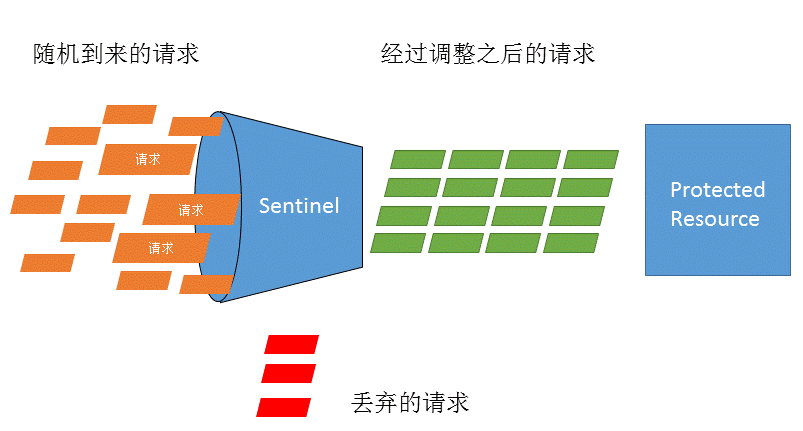

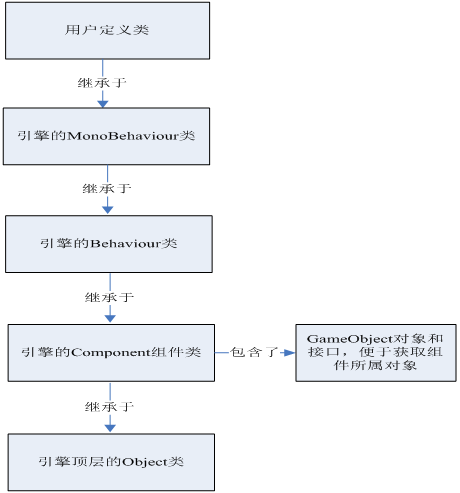
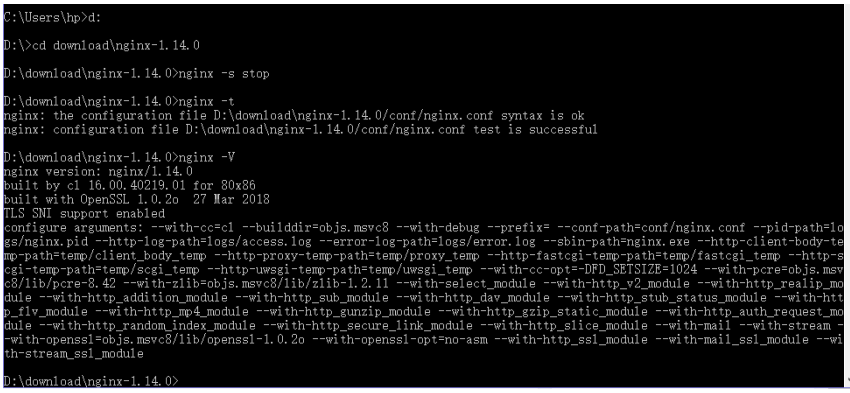
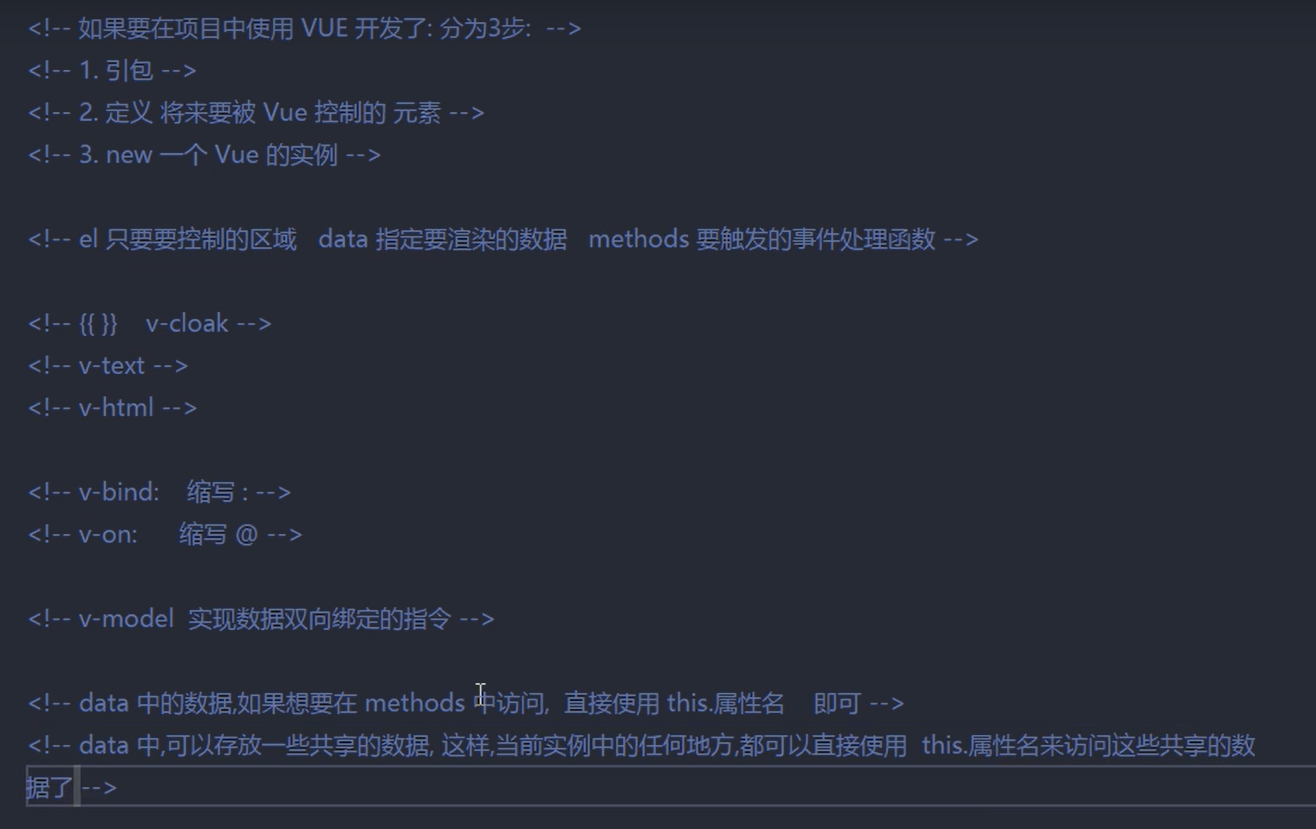
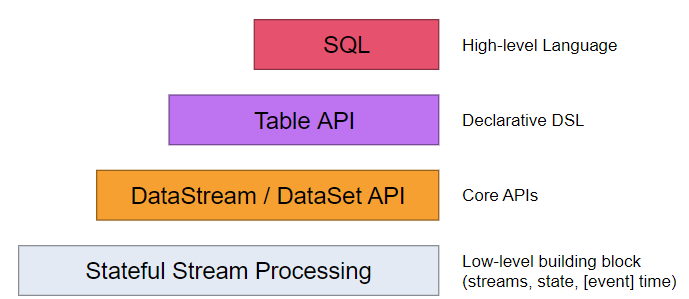



还没有评论,来说两句吧...